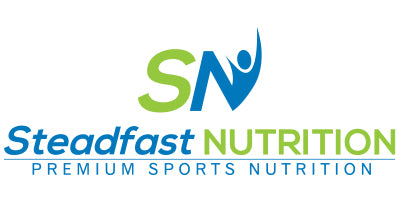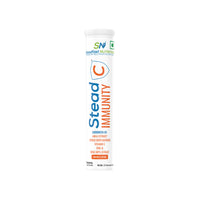Table of Content
Vitamin C, also known as ascorbic acid, is essential for the immune system, aiding in the prevention of infection and disease-fighting. Since it's water-soluble and not stored in the body, daily dietary intake is necessary. Vitamin C is crucial for maintaining the health of body tissues, wound healing, protecting cells from oxidative stress, and reducing the risk of diseases like cancer. It also supports the immune system, along with zinc and vitamin A. Foods rich in vitamin C include guavas, bell peppers, kiwifruit, strawberries, oranges, papayas, broccoli, tomatoes, kale, and snow peas.
Top 10 Vitamin C Food Sources:
1. Guava
Guava is a vitamin C powerhouse, with one fruit containing between 150 mg to 247 mg, often providing 200% of your daily recommended intake. It can be enjoyed by scooping the flesh, eating it whole without the skin, or adding it to salads and smoothies. A 100 g guava has approximately 214 mg of vitamin C, or 267.5% of the daily value, and is rich in lycopene, fibre, folate, potassium, and calcium. Consuming guava may also help lower blood pressure and cholesterol.
2. Papaya
Papaya, also known as pawpaw, is a tropical fruit with a buttery texture. Surprisingly, 100 g provides nearly 60% of your daily vitamin C needs, along with fibre, folate, and vitamin A. It's a taste of the tropics, great alone or in yogurt.
Papaya's nutrient profile includes vitamin C, carotenes, flavonoids, B vitamins, folate, potassium, magnesium, and fibre, promoting heart health and potentially aiding against colon cancer. Enjoy it in salads, smoothies, salsa, or desserts. Half a small papaya covers your vitamin C needs, plus vitamin A, folate, and potassium.
3. Amla
Amla, also known as Indian gooseberry, is a superfood rich in vitamin C, and widely used in Ayurvedic medicine. Though sour on its own, amla enhances the flavour of various recipes. Eating just one or two fresh amla berries a day can meet your daily vitamin C needs. A 100-gram serving of fresh amla provides as much vitamin C as 20 oranges. Compared to oranges and lemons, amla offers significantly more vitamin C, with approximately 252 mg per 100 g versus approximately 53 mg per 100 g in oranges.
4. Orange
Oranges are a rich source of vitamin C, with a 100 g orange containing around 53.2 mg. This vitamin helps protect cells, boosts collagen production, improves skin health, and enhances the immune system. Orange consumption can help meet daily vitamin C needs and provides other nutrients like folate, calcium, and magnesium. Adding orange segments to salads and breakfast bowls is a popular way to enjoy this fruit. The peel, which is high in minerals, should not be overlooked. Unsweetened orange juice, however, should be limited to one 150 ml glass per day due to its natural sugar content. Oranges also supply folate, thiamine, potassium, vitamin A, calcium, vitamin B6, pantothenic acid (Vitamin B5), fibre, and magnesium, contributing to overall health benefits such as combating colds, improving heart health, boosting brain function, and maintaining healthy skin.
5. Lemon
Lemons are a powerhouse of vitamin C, quinines, terpenoids and antioxidants that boost immunity, aiding in combating anaemia and heart disease and cancer prevention. 100 g of lemon contains about 48.16 mg of vitamin C, contributing significantly to daily intake. Lemons boost immune, heart, kidney, and skin health, preventing scurvy. Their vitamin C content also acts as an antioxidant and helps absorb non-heme iron from foods. Additionally, lemon juice can lower blood pressure and improve skin health.
6. Broccoli
Broccoli is a nutrient-dense vegetable rich in vitamin C, fibre, vitamin K, and potassium. A 100 g serving contains about 65-89.2 mg of vitamin C, with half a cup of steamed broccoli providing 57% of the daily value (DV). One cup of cooked broccoli offers around 81 mg of vitamin C. For maximum vitamin C retention, steam broccoli for five minutes or less. Broccoli can be eaten raw or cooked, in dishes like soups, stir-fries, and salads.
7. Bell Peppers
Bell peppers are a top source of vitamin C, with content increasing as they mature. 100 g of yellow pepper provides 137 mg (approx 160% DV), while green peppers contain about 123 mg per 100 g cup. They also offer vitamins A, B, E, K, and antioxidants. Consuming bell peppers can benefit eye health and reduce cataract progression risk. Enjoy them raw, in salads, or cooked in various dishes.
8. Kiwi
Kiwi, a small green fruit, is packed with vitamin C. One medium-sized kiwi provides approximately 56-70 mg of vitamin C, meeting 65-95% of the daily value. It also offers fibre, potassium, and other beneficial nutrients. Kiwis may reduce blood platelet aggregation, reducing the risk of blood clots. They are known for their immune-boosting properties due to their anti-inflammatory and antioxidant effects. Enjoy kiwis raw by peeling and eating them or incorporate them into smoothies, salads, or yogurt for a nutritious addition to your diet.
9. Cauliflower
Cauliflower, a cruciferous vegetable, is rich in vitamin C and fibre. 100 g of cooked cauliflower provides about 51 mg of vitamin C. It's also a good source of vitamin K and contains phytonutrients that offer various health benefits. Cauliflower can be enjoyed steamed or roasted with olive oil, making it a versatile addition to meals for its nutritional value and potential health benefits.
10. Strawberry
Strawberries are a nutrient-rich fruit known for their high vitamin C content and antioxidant properties. 100 g of sliced strawberries provide around 50-55 mg of vitamin C, meeting a significant portion of daily needs. Regular consumption may lower the risk of cardiovascular disease, obesity, and diabetes. Additionally, strawberries are rich in fibre, folate, and potassium, making them a valuable addition to a healthy diet. Their antioxidants also contribute to reducing the risk of conditions like cancer and heart disease.
Why is vitamin C important?
Vitamin C, or ascorbic acid, is vital for several reasons:
1. Collagen Production:
Essential for producing collagen, a protein in skin, bones, and tissues.
2. Antioxidant Properties:
Protects cells from damage caused by free radicals, reducing inflammation and the risk of diseases like cancer.
3. Immune Support:
Boosts the immune system, aiding in the fight against infections and illnesses.
4. Iron Absorption:
Helps the body absorb non-heme iron.
5. Wound Healing:
Enhances wound healing.
Since vitamin C is water-soluble and not stored by the body, it must be consumed daily through diet or supplements. Natural sources include guavas, bell peppers, kiwifruit, strawberries, oranges, papayas, broccoli, tomatoes, kale, and fenugreek leaves. Supplements may be recommended to ensure daily requirements are met.
Vitamin C supports various body functions, including the biosynthesis of collagen, L-carnitine and neurotransmitters, and maintaining healthy bones, teeth, and cartilage. Deficiency can lead to scurvy, characterised by symptoms like swollen joints, bleeding gums, and anaemia. Studies show low levels of vitamin C can impair the immune system and lead to other health issues.
Risks of low vitamin C intake
A low intake of vitamin C reduces the body's ability to produce collagen, negatively affecting various tissues. Vitamin C deficiency, known as scurvy, lowers immune function and increases infection risk. Symptoms of vitamin C deficiency include joint pain, bleeding gums, poor wound healing, tooth loss, easy bruising, dry skin and muscle weakness. At-risk groups include smokers, infants consuming evaporated/boiled milk, individuals with limited diets, and those with intestinal malabsorption conditions. Scurvy can develop within a few months of very low vitamin C intake and, if untreated, can be fatal. Though rare today, deficiency can still occur in people with access to limited food variety.
How much Vitamin C should I Take?
The recommended daily intake of vitamin C varies by age, sex, and specific life stages. For adults and older individuals, it ranges from 65 to 80 milligrams per day, while children require less. Pregnant and breastfeeding individuals have slightly higher requirements. These recommendations include vitamin C from both food and supplements.
The daily upper limits for vitamin C represent the maximum safe intake from food and supplements. They range from 400 mg for children aged 1-3 years to 2,000 mg for adults. However, it's important not to exceed these limits without medical guidance.
Overall, obtaining sufficient vitamin C through a balanced diet is typically achievable, but supplements may be necessary in some cases, especially for certain population groups or individuals with specific health needs.
Health benefits of vitamin C
Boosts Immune System:
Vitamin C boosts the immune system, aiding in the fight against illnesses like the common cold. It has been shown to help prevent pneumonia and support tetanus treatment.
Helps Prevent Cancer:
As an antioxidant, vitamin C helps protect cells from free radical damage, potentially lowering the risk of certain cancers. Some studies link higher vitamin C intake to a reduced risk of brain tumours, colorectal tumours, and lung cancer.
Expedites Wound Healing:
Essential for collagen production, vitamin C helps heal wounds. Low vitamin C levels can slow wound healing, prompting healthcare professionals to recommend supplements during recovery.
Has Antioxidant Properties:
Vitamin C protects cells from damage by free radicals, which are linked to ageing and diseases such as cancer and heart disease.
Increases Iron Absorption:
It enhances the absorption of non-heme iron present in plant-based foods.
Reduces Risk of Cataracts & Age-related Macular Degeneration (AMD):
Vitamin C might help reduce the risk of cataracts and slow the progression of AMD, likely due to its antioxidant activity.
Helps Manage Diabetes:
A study suggested vitamin C supplements could improve glucose levels and blood pressure in people with diabetes.
Helps Fight Anaemia:
Vitamin C can enhance iron absorption, helping fight iron-deficiency anaemia.
Pollution:
Combined with vitamin E, vitamin C may reduce symptoms of asthma and chronic obstructive pulmonary disease due to its antioxidant effects.
Allergies:
High doses of vitamin C might reduce allergy symptoms by reducing oxidative stress during allergic reactions.
Motion Sickness:
Vitamin C may help suppress symptoms of seasickness.
Can we take vitamin C supplements in place of vitamin C foods?
While supplements can ensure adequate intake, they shouldn't replace vitamin C-rich foods. Whole foods offer a range of nutrients that support overall health, including antioxidants and dietary fibre. A diverse diet of fruits and vegetables provides a broader array of vitamins and minerals beyond just vitamin C.
The best vitamin C tablets are valuable for individuals with dietary limitations or specific health concerns, but it's crucial to use them as directed to avoid excessive intake and potential adverse effects.
Vitamin C is crucial for various bodily functions, and while many obtain enough through diet, supplements can bridge dietary gaps. It's abundant in plant foods, so a balanced diet with fruits and vegetables usually suffices. Those aiming to increase intake can consume rich sources daily.
Maintaining adequate vitamin C levels is vital for good health. Fortunately, India offers plenty of vitamin C-rich foods, including citrus fruits like oranges and lemons as well as leafy greens like kale and parsley. Incorporating these into your diet ensures you receive enough of this essential nutrient for optimal bodily function and health.


